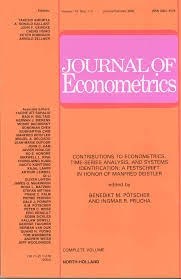
Hoogerheide, L., Kleibergen, F. and \van Dijk\, H.K. (2007). Natural conjugate priors for the instrumental variables regression model applied to the Angrist-Krueger data Journal of Econometrics, 138(1):63--103.
-
Affiliated authors
-
Publication year2007
-
JournalJournal of Econometrics
We propose a natural conjugate prior for the instrumental variables regression model. The prior is a natural conjugate one since the marginal prior and posterior of the structural parameter have the same functional expressions which directly reveal the update from prior to posterior. The Jeffreys prior results from a specific setting of the prior parameters and results in a marginal posterior of the structural parameter that has an identical functional form as the sampling density of the limited information maximum likelihood estimator. We construct informative priors for the Angrist-Krueger [1991. Does compulsory school attendance affect schooling and earnings? Quarterly Journal of Economics 106, 979-1014] data and show that the marginal posterior of the return on education in the US coincides with the marginal posterior from the Southern region when we use the Jeffreys prior. This result occurs since the instruments are the strongest in the Southern region and the posterior using the Jeffreys prior, identical to maximum likelihood, focusses on the strongest available instruments. We construct informative priors for the other regions that make their posteriors of the return on education similar to that of the US and the Southern region. These priors show the amount of prior information needed to obtain comparable results for all regions.